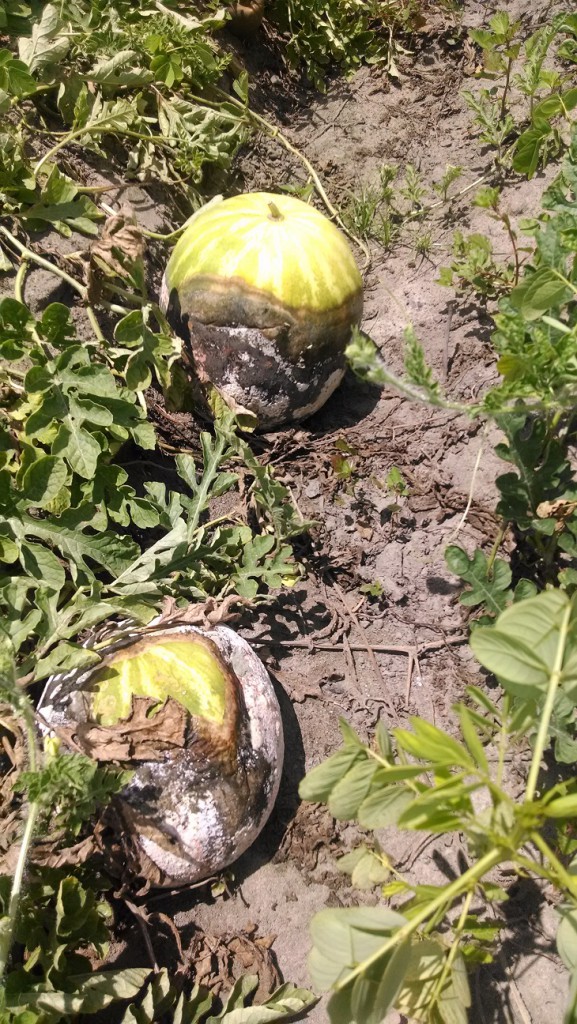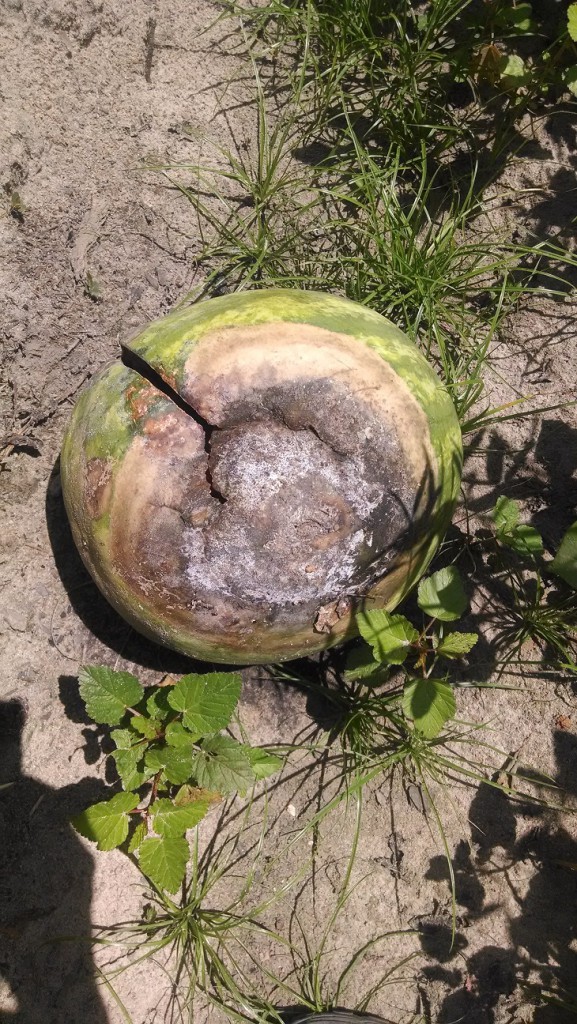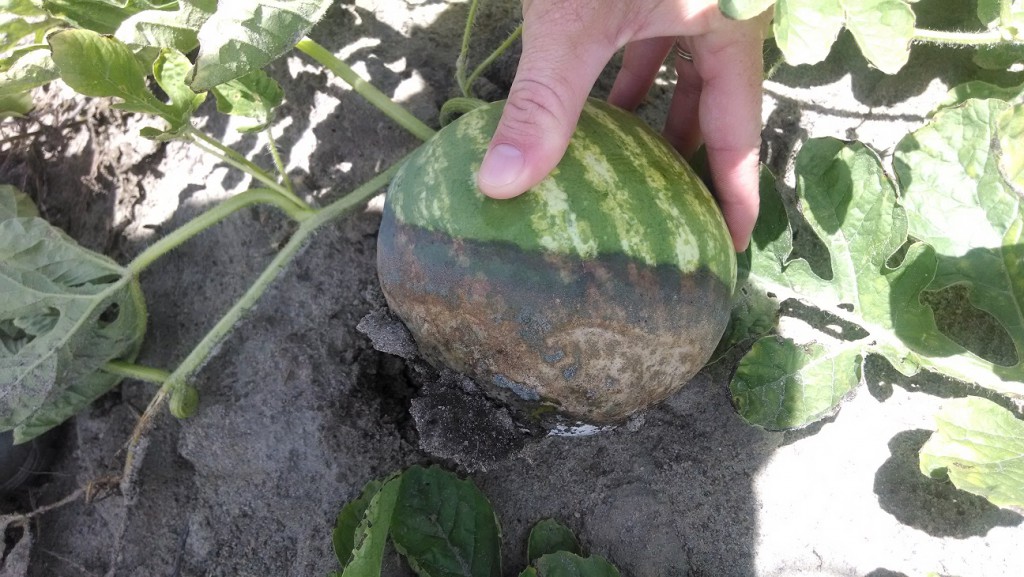The pictures below are classic Phytophthora fruit rot symptoms on watermelons. As you can see, this disease can cause a significant yield loss.
Infection will generally start on the side of the fruit that is in contact with the ground, and can occur at any time from fruit set until harvest. Overhead irrigation and rain can also cause symptoms on the upper surface area of the fruit by splashing water containing the pathogen onto nearby plants. Symptoms typically begin as a water-soaked lesion that expand, and become covered with white mold. The fruit rot will progress rapidly, resulting in complete collapse of the fruit. Phytophthora fruit rot can also develop after harvest, during transit or in storage.
The most effective method of control for this disease is to prevent Phytophthora capsici from moving into a non-infested field. Keep in mind that P. capsici spreads by soil, water, and/or plant material so it is highly recommended to thoroughly clean all farm equipment that is used in an infested field before moving it to another field. Also, avoid using water sources (i.e. ponds or reservoirs) that receive run-off water from an infested field.
The following cultural practices can help to manage this disease in cucurbit fields.
Because P. capsici can survive in soil for several years, fields without a history of Phytophthora blight should be selected for planting. High soil moisture favors the development of this disease, thus well-drained fields should be selected and excessive irrigation should be avoided. Also, avoid planting cucurbit crops in areas of the field that have poor drainage.
The field should be scouted regularly for Phytophthora symptoms, especially after major rainfalls, and particularly in low areas of the field. When symptoms are localized in a small area of the field, the infected plants should be plowed into the soil. Plants should be sprayed with effective fungicides for disease control especially during favorable weather conditions for disease development. Healthy fruit should be removed from the infested area as soon as possible, and they should be checked for disease development routinely.
Attached is the 2016 Watermelon Spray guide that has recommended fungicide applications for P.cap and various other important watermelon diseases.
For more information please contact the Colquitt County Extension Office.
Resource: https://www.apsnet.org/edcenter/intropp/lessons/fungi/oomycetes/pages/phytophthora.aspx




